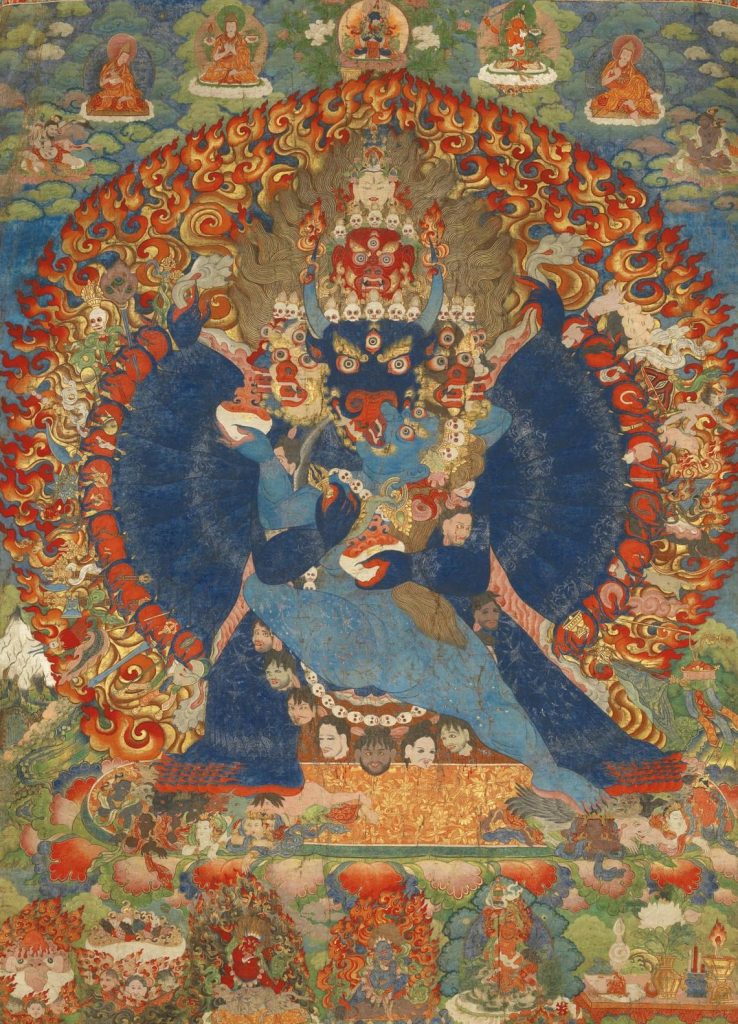Tibetan Thangka paintings are revered as the epitome of ancient Buddhist art, wherein art merges with spirituality. Among the regions where Buddhism flourishes, Sikkim stands as a hub for this remarkable art form. Thangka painting of Sikkim showcases an array of iconography, each telling a tale of profound artistic and spiritual significance. Let us know more about these sacred masterpieces, explore their intricate symbolism, and delve into the artistic treasures that grace the Himalayan landscapes.
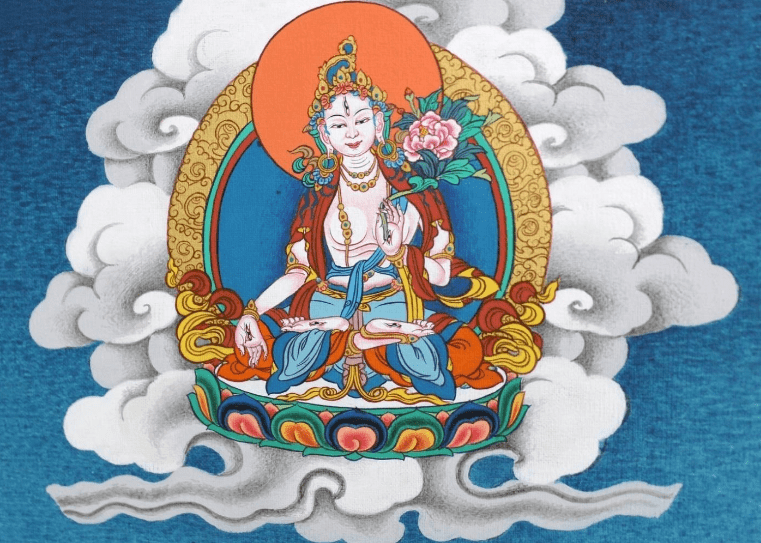
The origins of Thangka painting can be traced back to the 7th century in Nepal. Originally conceived as teaching aids, these intricate scrolls played a pivotal role in disseminating the life and principles of Buddha to disciples during their journey. In this historical context, the enlightened teachers, known as lamas, would travel to distant lands to spread the profound teachings of Buddhism. Buddhist Thangka paintings became their prime tool, bridging the gap between language barriers and cultural differences.
Divine Symbolism and Iconography
Thangka painting serve as visual gateways to the spiritual realm. Every stroke and every colour in these intricate compositions represents a profound symbolic language. Iconography becomes the conduit through which the divine is manifested. From the compassionate visage of Buddha to the intricate mandalas depicting cosmic order, Thangka paintings embody a spiritual lexicon that weaves together ancient myths, legends, and religious teachings. Speaking about the varied iconography found in Thangka paintings, let’s chart the different representations.
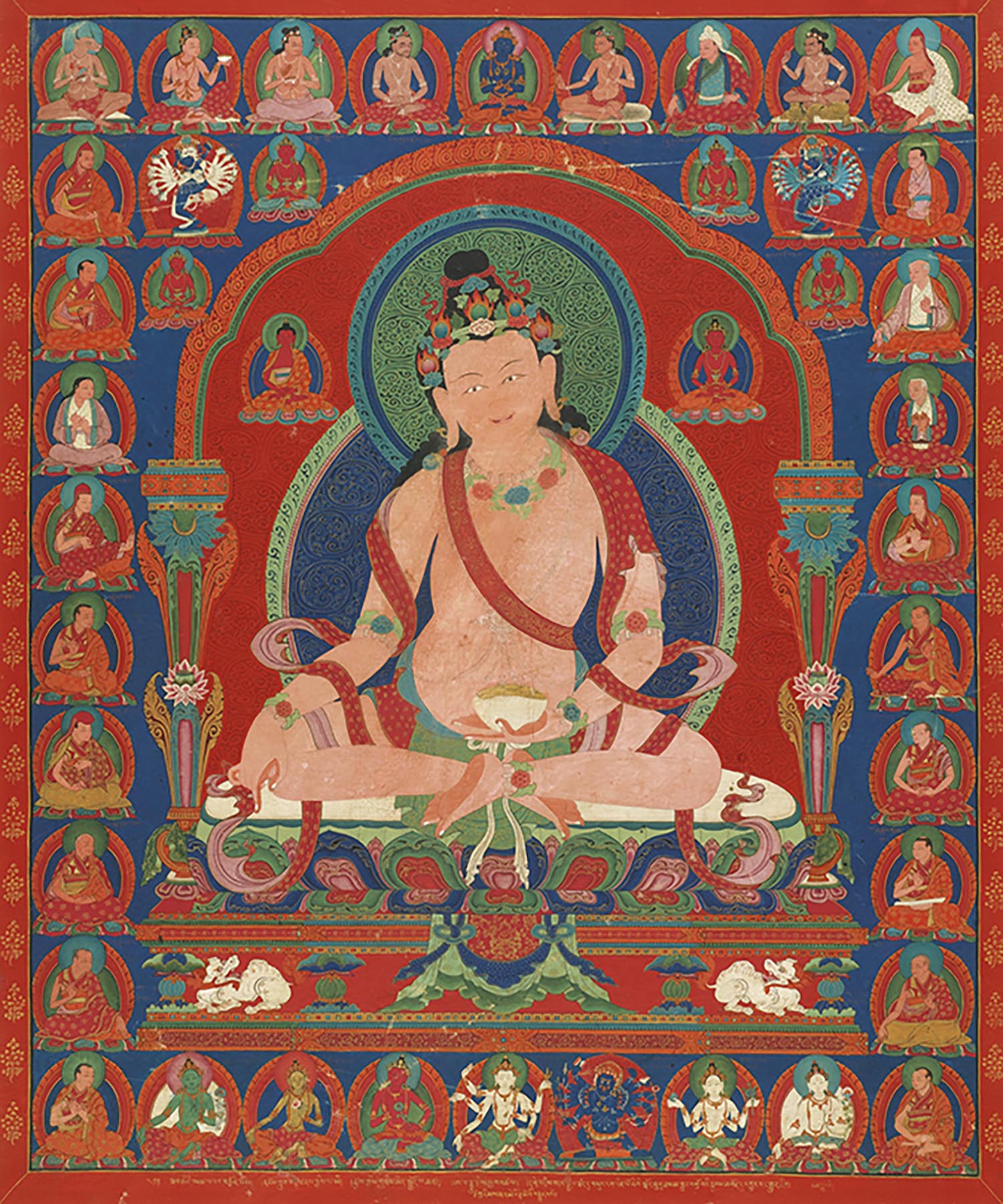
Buddha
In the Thangka painting of Sikkim, Buddha is often depicted as the central figure, radiating serene compassion and profound wisdom. The portrayal of Buddha captures different aspects and stages of his life, each conveying specific teachings and insights. There are several variations in the Buddhist Thangka paintings based on the figure depicted. Shakyamuni Buddha, The historical Buddha, Siddhartha Gautama, is often depicted seated in a lotus posture, known as the meditative or teaching pose. This representation symbolises his enlightenment and the transmission of his teachings to humanity.
In other Buddhist Thangka paintings Amitabha Buddha, also known as the Buddha of Infinite Light, is depicted in a deep red or golden hue, seated in a meditative pose with a bowl of nectar in his hands. Amitabha is associated with the Pure Land, a blissful realm where devotees aspire to be reborn after death.
Bodhisattvas
The Thangka painting of Sikkim also prominently features various bodhisattvas, enlightened beings who embody compassion and wisdom. These deities, often depicted in graceful and elegant postures, inspire and guide practitioners on the path to enlightenment. Some notable bodhisattvas include the following.
Avalokiteshvara
Also known as the embodiment of compassion, Avalokiteshvara graces the Thangka painting and is depicted with multiple arms and eyes, symbolising the ability to reach out and perceive the suffering of all beings. This deity is revered for his compassion and his vow to assist all sentient beings on their spiritual journey.
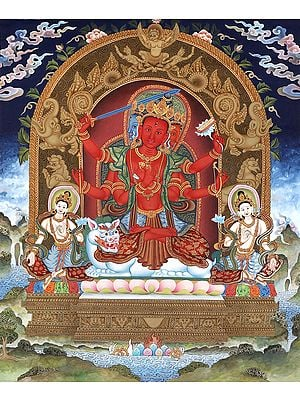
Manjushri
Tender faced Bodhisattva Manjushri represents wisdom, Manjushri in the Thangka painting is portrayed as a youthful figure wielding a sword of wisdom in one hand and a lotus flower holding the Prajnaparamita Sutra (Perfection of Wisdom) in the other. The depiction symbolises the cutting through of ignorance and the cultivation of profound insight.
Protectors and Guardians
Thangka painting of Sikkim also includes representations of protective deities and guardians who play crucial roles in safeguarding the Buddhist teachings and practitioners. These figures are often depicted with fierce expressions and adorned with elaborate armour. Some examples include:
Mahakala: As a fierce deity, Mahakala is depicted with a wrathful countenance, adorned with a crown of skulls and carrying weapons. Mahakala serves as a protector, dispelling obstacles and negative forces on the path to enlightenment.
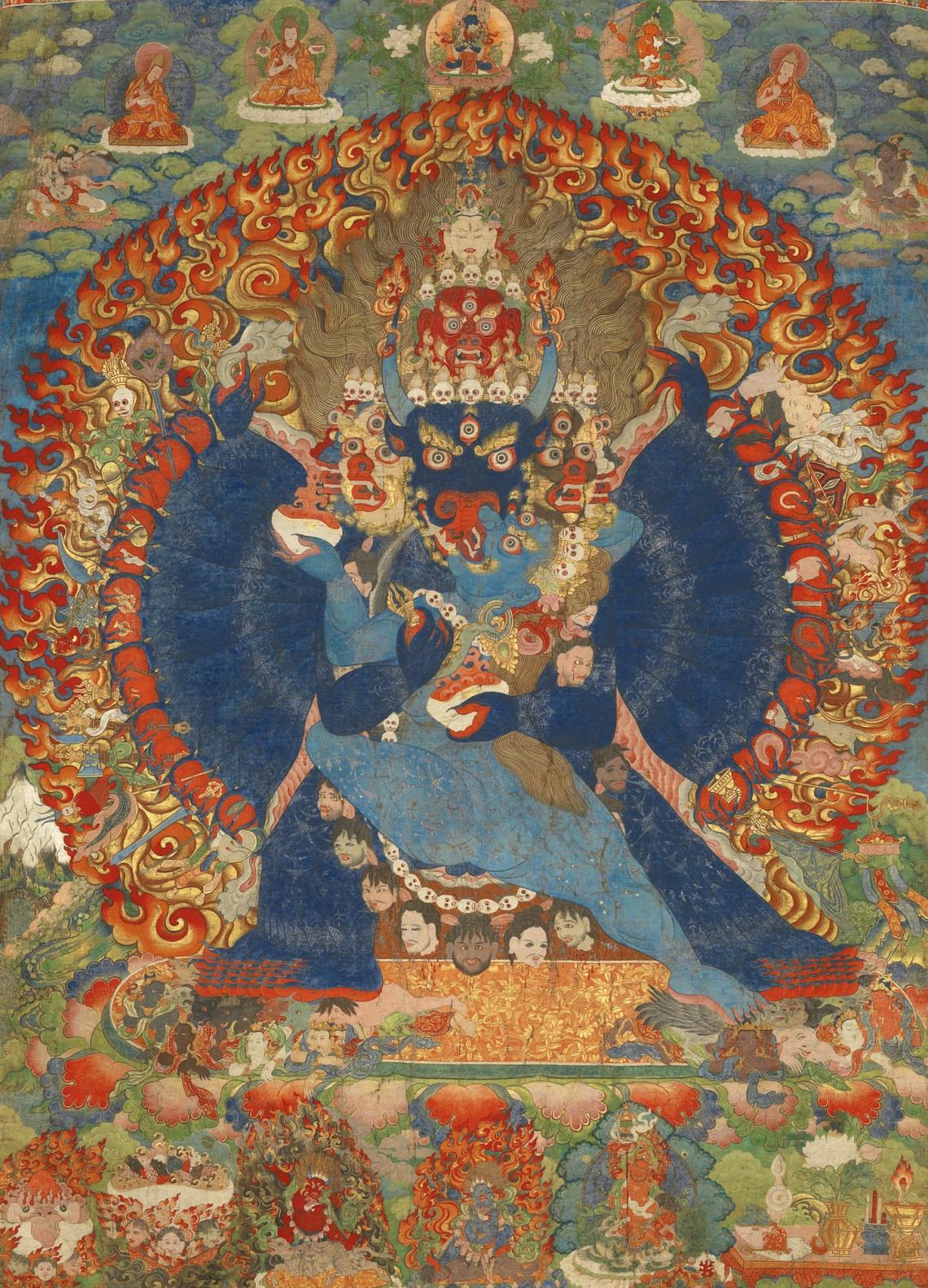
Tara: The female deity Tara in Buddhist Thangka paintings, known as the embodiment of compassion and swift action, is depicted in various colours, each representing a different aspect or quality. Green Tara represents enlightened activity, while White Tara symbolises compassion and longevity.
Mandalas and Cosmic Order: Mandala Thangka painting involves geometric patterns within Thangkas to represent the cosmic order and serve as meditation aids. These intricate designs, often consisting of concentric circles and intricate squares, symbolize the interconnectedness of all beings and the harmony of the universe. Mandalas invite viewers to contemplate the vastness of existence and the inherent unity of all things.
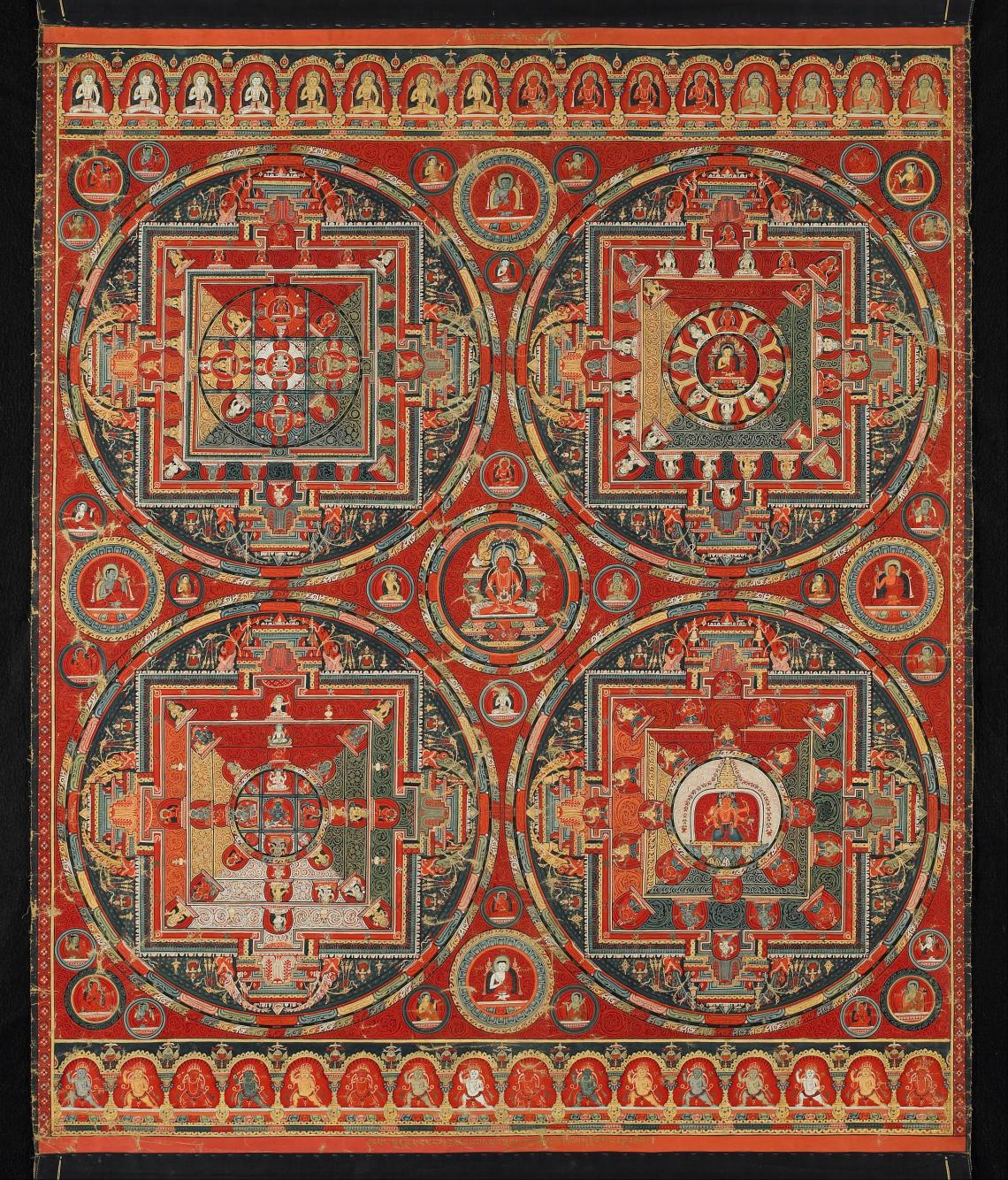
Animals and Mythical Creatures
Thangka painting often features animals and mythical creatures, each carrying symbolic meaning. For example, the snow lion represents fearlessness and strength, while the garuda—a mythical bird—symbolises the conquering of negativity and spiritual ascension. These animal and mythical figures add depth and visual intrigue to the compositions, while also conveying profound spiritual teachings.
Elements of Nature
Elements of nature, such as mountains, rivers, trees, and flowers, are meticulously painted in a Thangka painting, often with symbolic intent. Mountains symbolise stability and spiritual transcendence, while rivers represent the flow of consciousness. Trees and flowers symbolise growth, vitality, and the impermanence of existence, reminding viewers of the ever-changing nature of reality.
Thangka Painting Technique and Materials
Thangka painting can be categorised based on the techniques employed and the materials used in their creation. Artists may choose to paint or embroider the Thangkas, employing different methods to achieve their artistic vision. Some Thangka painting utilises silk applique while others are painted on various backgrounds, such as black, red, or golden.
Thangka Painting Tutorial
The process of painting a Thangka painting is elaborate and time-intensive, demanding exceptional skill and patience from the artist. The journey begins with the preparation of the canvas, meticulously drawing foundation lines that guide the composition. Buddhist Thangka paintings in the scrolls hold religious significance, purification rituals and prayers are performed, infusing the artwork with spiritual energy. Natural mineral paints are then carefully mixed to create the desired hues. The actual Thangka painting technique can span over three months to a year, showcasing the artist’s dedication and commitment to their craft. This intricate process results in a Thangka painting that is not only visually stunning but also imbued with a profound sense of spirituality.
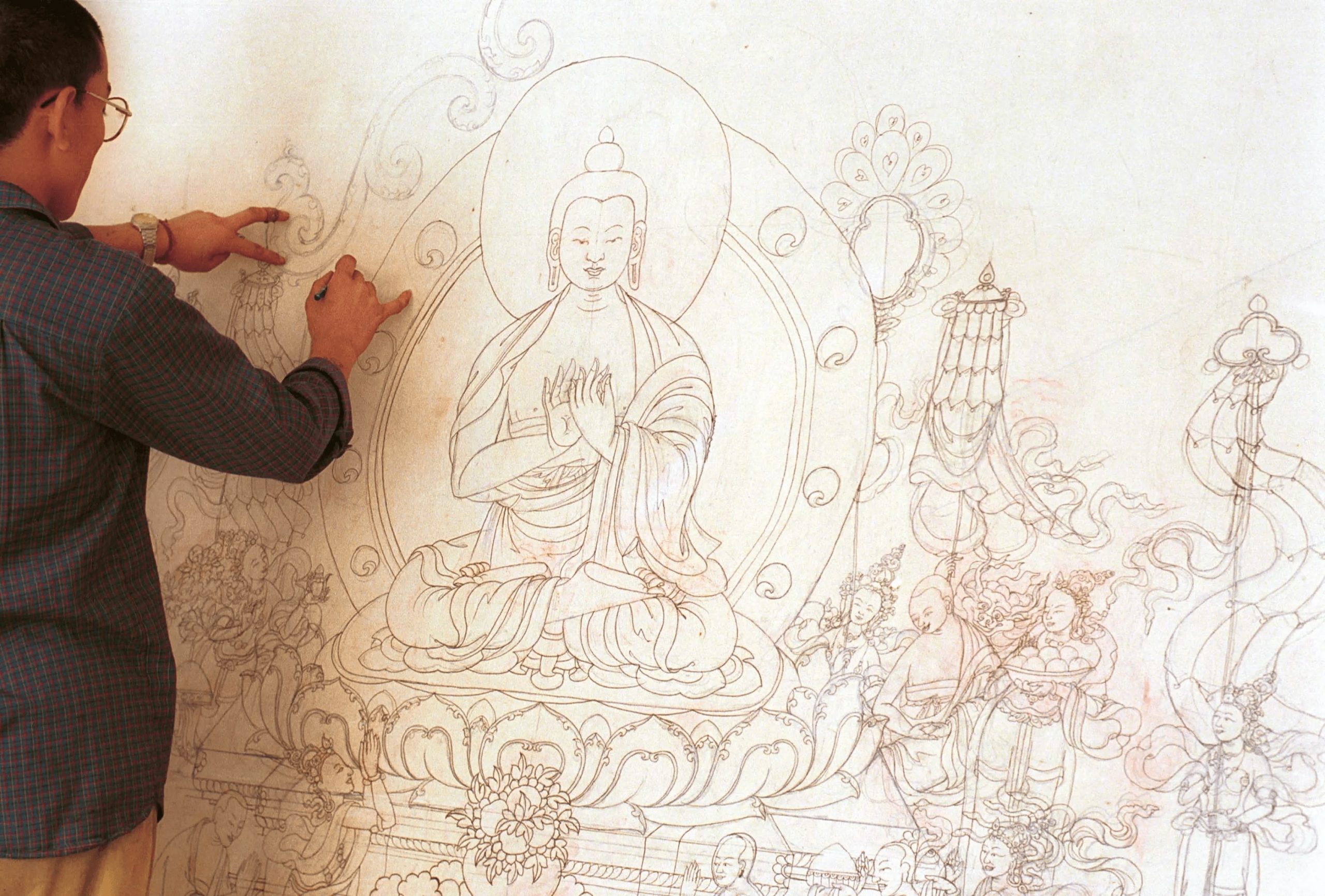
Thangka painting plays diverse roles beyond their religious and artistic significance. They serve as objects of veneration during religious festivals and rituals, offering a focal point for devotion and meditation. Buddhist Thangka paintings also find their place in the world of education and preservation, as they are used as teaching aids to transmit the wisdom and teachings of Buddha. In recent times, these masterpieces have become a source of inspiration for contemporary artists, who draw from the rich visual language of Thangka painting to create new forms of artistic expression.
Image Courtesy – Wikimedia Commons
From Kalamkari to Kanjivaram: 11 Indian Textiles you must know about

Contributor

